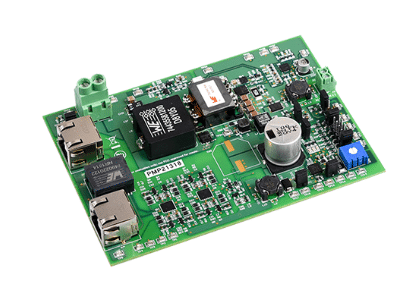This design offers a comprehensive solution for powering devices through PoE technology, focusing on efficiency, reliability, and compliance with industry standards.

The active clamp forward converter has emerged as a pivotal technology in Power over Ethernet (PoE), particularly for powering devices (PD) . Its significance lies in efficiently converting electrical power from a source to a PoE-enabled device, ensuring a stable and reliable power supply. This technology is especially crucial in modern networking and communication infrastructures, where the demand for seamless connectivity and uninterrupted power is paramount. By leveraging the active clamp forward converter, businesses and individuals can deploy a wide array of PoE devices without the need for additional power sources, thereby simplifying installation, reducing cabling complexity, and enhancing overall system efficiency.
This reference design PMP21318 by Texas Instruments showcases a Type-4, Class 8, 71-W active clamp forward converter specifically tailored for powering devices (PD) through Power over Ethernet (PoE) technology. At the heart of this design is the TPS2373-4 PD controller, which is responsible for the crucial functions of the detection and classification of PDs. This controller plays a pivotal role in activating the UCC2897A pulse-width modulation (PWM) controller, thanks to its advanced start-up feature. It supports power levels compliant with the IEEE802.3bt Type-4 standard. This ensures the design can cater to the latest and most demanding PD requirements It incorporates an automatic maintain power signature (MPS) mechanism, which is essential for ensuring continuous power delivery and system reliability.
The advanced start-up feature of the controller is another highlight of this design. It allows for a smooth and efficient initiation of the power conversion process, which is critical for the overall performance and longevity of the system. Including synchronous rectifiers in the design significantly enhances its efficiency. These rectifiers reduce power losses during the conversion process, thereby improving the system’s overall energy efficiency. It offers various output voltage options with a minimum input voltage of 42.5V, a maximum of 57V, a nominal output voltage of 12V, and a maximum output current of 6A, delivering an output power of 72W. It features an isolated, forward-active clamp topology for improved efficiency in PoE applications.
The design is particularly suitable for communications equipment like WLAN/Wi-Fi access points, ensuring reliable power for uninterrupted connectivity. It is applicable in the industrial sector for powering fixed wired IP cameras, providing efficient and reliable power for surveillance and security purposes. It is well-suited for various applications, particularly in communications and industrial settings, where efficient and reliable power delivery is a critical requirement.
TI has tested this reference design. It comes with a Bill of Material (BOM), schematics, test reports, PCB layout, Gerber files, and more. The company’s website has additional data about the reference design. To read more about this reference design, click here.







